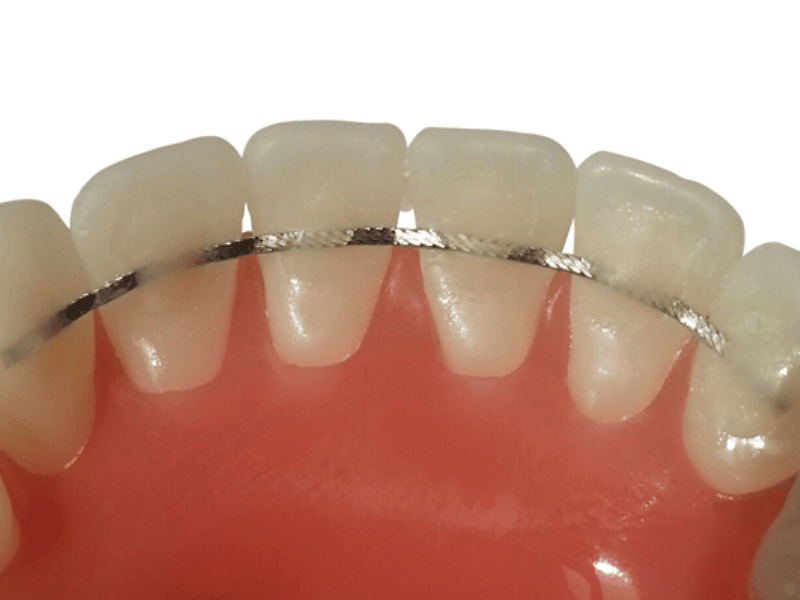In the ever-evolving world of orthodontics, the quest for the perfect smile continues to drive innovation. Once braces or other orthodontic treatments have successfully aligned teeth, maintaining those results becomes paramount. One discreet and highly effective option that has gained prominence is the bonded lingual retainer, often referred to as the “lingual arch appliance.” This unobtrusive orthodontic device plays a crucial role in ensuring that your newly straightened teeth remain in their desired positions. In this article, we will delve into the world of bonded lingual retainers, exploring why they are considered a discreet and reliable choice for maintaining orthodontic results.
Understanding Orthodontic Retainers
Before delving into the specifics of bonded lingual retainers, it’s essential to comprehend the fundamental role that retainers play in orthodontic treatment. After braces or other orthodontic appliances have successfully corrected misaligned teeth, the natural tendency of teeth to shift back into their original positions can be a persistent challenge. Retainers are designed to prevent this relapse and preserve the results of orthodontic treatment.

There are two primary types of orthodontic retainers: removable and fixed. Removable retainers can be taken out for cleaning and eating, making them convenient but relying on patient compliance. On the other hand, fixed retainers, including bonded lingual retainers, are attached to the teeth and offer continuous support without the need for patients to remember to wear them consistently.
Bonded Lingual Retainers: A Closer Look
Bonded lingual retainers, also known as lingual arch appliance, are gaining popularity for their discreet and effective approach to maintaining orthodontic results. Unlike traditional removable retainers or clear aligners, which are conspicuous and may require daily removal and insertion, bonded lingual retainers are hidden from view and remain in place 24/7. This characteristic offers several significant advantages:
- Invisibility: One of the primary reasons why bonded lingual retainers are favored by many patients is their invisibility. Unlike traditional braces, which are attached to the front of teeth, lingual retainers are placed on the back (lingual) surface of the teeth, making them virtually undetectable to others.
- Consistent Support: Fixed retainers, including bonded lingual retainers, provide consistent support to the teeth. They work silently in the background, ensuring that your teeth remain in their desired positions without any conscious effort on your part.
- No Need for Patient Compliance: Unlike removable retainers that require strict patient compliance in terms of wearing and cleaning, bonded lingual retainers do not rely on the patient’s diligence. Once they are bonded in place by an orthodontist, they stay there until a professional decides to remove them.
- Maintenance-Free: Bonded lingual retainers are essentially maintenance-free for the patient. There are no trays to clean, no aligners to replace, and no risk of misplacing them.
- Long-Term Stability: These retainers are designed for long-term use, often lasting several years. This ensures that your orthodontic results are maintained well into the future.
- Comfort and Speech: While there may be an initial adjustment period, many patients find bonded lingual retainers comfortable to wear. They do not interfere with speech or cause the discomfort associated with traditional braces.
- Efficient Results: Bonded lingual retainers work efficiently to prevent any unwanted tooth movement, which can happen even after orthodontic treatment is completed. This means that your investment in orthodontic treatment is protected.
The Procedure of Getting a Bonded Lingual Retainer
The process of getting a bonded lingual retainer is straightforward and typically follows these steps:
- Consultation: After completing orthodontic treatment, your orthodontist will assess your case to determine if a bonded lingual retainer is the right choice for you.
- Impression and Customization: If deemed suitable, your orthodontist will take an impression of your teeth to create a custom-fitted retainer that matches the lingual surface of your teeth precisely.
- Bonding: Once the retainer is ready, it will be bonded to the lingual surface of your teeth using dental cement. This is a painless and quick procedure.
- Adjustments: Your orthodontist may make minor adjustments to ensure the retainer fits comfortably and provides optimal support.
- Post-Procedure Guidance: You will receive instructions on how to care for your bonded lingual retainer, including proper oral hygiene practices and what to do in case of any issues.
Conclusion:
Orthodontic treatment is an investment in your smile and oral health, and it’s crucial to protect that investment long after your braces are removed or other orthodontic treatments are completed. Bonded lingual retainers, often referred to as the “lingual arch appliance,” offer a discreet and effective solution to maintaining your newly aligned teeth. With their invisibility, consistent support, and minimal maintenance requirements, bonded lingual retainers are becoming an increasingly popular choice among orthodontic patients.
If you value the convenience of not having to remember to wear your retainer, the comfort of an unobtrusive device, and the assurance that your orthodontic results will stand the test of time, a bonded lingual retainer may be the perfect choice for you. Consult with your orthodontist to determine if this discreet option aligns with your post-treatment needs and preferences. Remember, a bonded lingual retainer can be your unseen protector, ensuring that your smile remains as beautiful and confident as the day your orthodontic journey began.
Leave a comment